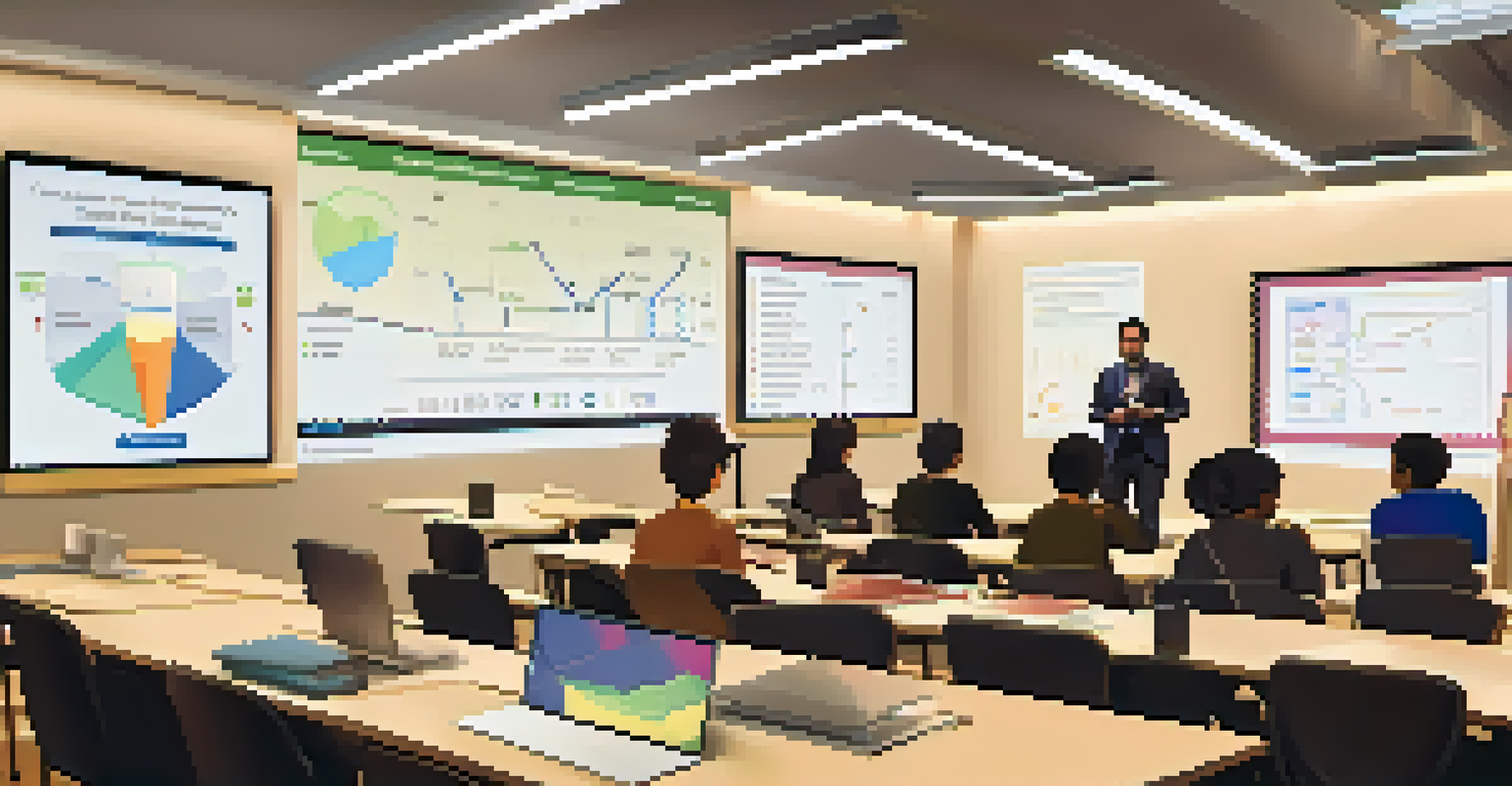Designing Effective Blended Assessments for Student Success

Understanding Blended Assessments and Their Importance
Blended assessments combine traditional testing methods with modern digital tools. This hybrid approach not only evaluates student knowledge but also engages various learning styles. By integrating online quizzes, projects, and discussions, educators can create a more holistic assessment experience.
Assessment is the bridge between teaching and learning.
The importance of blended assessments lies in their ability to provide a comprehensive picture of a student's abilities. They allow for flexibility and creativity, catering to diverse learners. This adaptability ensures that students are assessed in ways that align with their strengths and skills.
Moreover, blended assessments foster a more interactive learning environment. They encourage collaboration among students and promote critical thinking. When designed effectively, these assessments can significantly enhance student success and retention.
Key Components of Effective Blended Assessments
Effective blended assessments should include a variety of components to cater to different learning preferences. These components can range from multiple-choice questions to group projects and reflective essays. By diversifying assessment formats, educators can better gauge student understanding.

Incorporating technology is another crucial component. Tools like online discussion forums and virtual simulations can provide enriching experiences that traditional assessments may lack. This not only makes assessments more engaging but also prepares students for real-world applications.
Blend Traditional and Digital Tools
Blended assessments use a mix of conventional testing and modern technology to create a more engaging and holistic evaluation of student knowledge.
Additionally, clear alignment with learning objectives is essential. Each assessment component should directly relate to what students are expected to learn. This ensures that assessments are purposeful and provide meaningful data on student progress.
Strategies for Designing Blended Assessments
One effective strategy is to start with clear learning outcomes. By defining what students should achieve, educators can create assessments that directly measure these goals. This targeted approach helps maintain focus throughout the assessment process.
The greatest danger in times of turbulence is not the turbulence; it is to act with yesterday's logic.
Another strategy is to incorporate formative assessments alongside summative ones. Formative assessments, such as quizzes and peer feedback, provide ongoing insights into student understanding. This allows for timely interventions and support, ultimately fostering student success.
Finally, consider leveraging student feedback in the design process. Involving students in discussions about assessment types and formats can lead to greater engagement. Their input can also provide valuable insights into what works best for their learning.
Utilizing Technology in Blended Assessments
Technology plays a pivotal role in enhancing blended assessments. Online platforms can facilitate various assessment methods, from quizzes to collaborative projects. These tools not only make assessments more accessible but also streamline the grading process for educators.
Additionally, technology enables real-time feedback, which is invaluable for student learning. For instance, instant grading systems allow students to see their performance immediately, promoting a growth mindset. This timely feedback loop encourages continuous improvement and learning.
Flexibility Enhances Learning Outcomes
By catering to diverse learning styles, blended assessments provide students with varied formats that align with their strengths, promoting better overall performance.
Moreover, using technology can also foster a sense of community among students. Virtual discussion boards and group projects can help students collaborate and learn from each other. This collaborative aspect enhances the overall learning experience.
Assessing Student Engagement and Performance
To ensure the effectiveness of blended assessments, it's crucial to evaluate student engagement. Observing participation levels during group projects or discussions can provide insights into student involvement. High engagement often correlates with better learning outcomes.
Performance metrics are also essential for assessing the success of blended assessments. Analyzing data from various assessment components helps educators understand what works and what needs improvement. This data-driven approach ensures that assessments are continuously refined.
Furthermore, conducting surveys or feedback sessions with students can yield valuable information. Understanding their experiences with blended assessments can highlight strengths and areas for growth. This feedback loop is vital for creating a responsive and effective assessment framework.
Challenges in Implementing Blended Assessments
While blended assessments offer numerous benefits, there are challenges to consider. One significant hurdle is the potential for unequal access to technology among students. Educators must find ways to ensure all students can participate fully, regardless of their technological resources.
Another challenge is the need for professional development for educators. Designing and implementing blended assessments requires training and support. Schools must invest in ongoing professional development to equip teachers with the necessary skills and knowledge.
Challenges Include Tech Access and Training
Implementing blended assessments can be hindered by unequal access to technology and the need for ongoing professional development for educators.
Finally, balancing the workload for both students and educators can be tricky. Blended assessments can be time-consuming to create and grade. Finding the right balance between thorough assessment and manageable workload is essential for sustainability.
Future Trends in Blended Assessments
The landscape of blended assessments is continually evolving, influenced by advancements in technology and educational practices. Future trends may include more personalized assessments, tailored to individual student needs and learning styles. This customization can enhance student engagement and success.
Another emerging trend is the integration of artificial intelligence in assessments. AI can analyze student performance data and provide insights that help educators refine their approaches. This technology-driven analysis can lead to more effective and responsive assessment strategies.

Additionally, as remote and hybrid learning environments become more common, blended assessments are likely to grow in popularity. The flexibility and accessibility they offer make them a suitable choice for diverse learning settings. Adapting to these trends will be key for educators aiming to support student success.